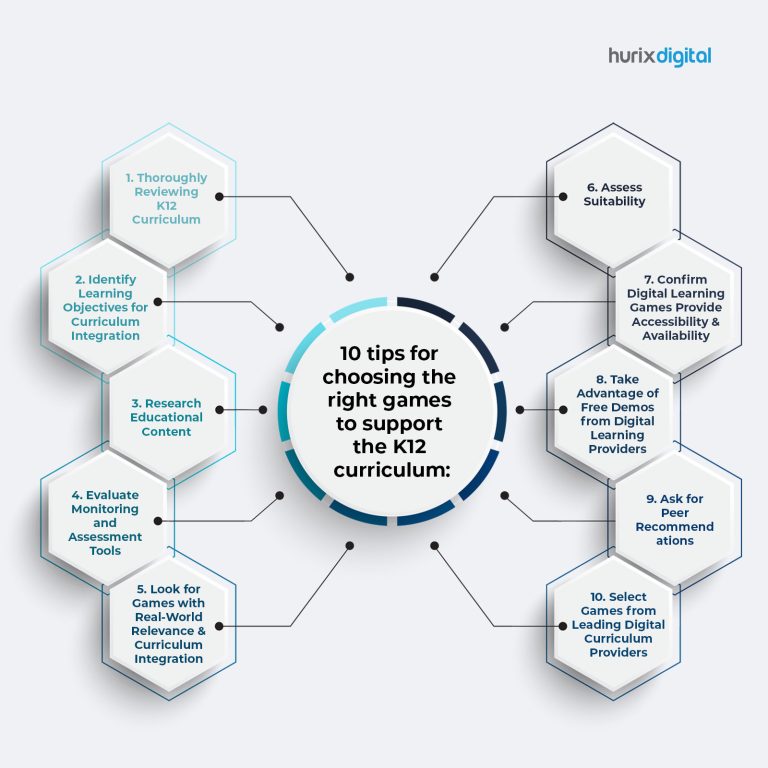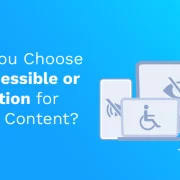
10 Tips for Choosing the Right Educational Games for K12 Curriculum
Summary
Learn how to choose the right educational games for the K12 curriculum, focusing on alignment with learning objectives, age appropriateness, and engagement levels.
Gamification in education has a long history. Research shows that using games to teach (gamification in education) has been a widespread practice for thousands of years. Over the past few decades, gamification in education has accelerated like never before.
Today, you’ll find that more than half of classrooms worldwide rely on digital learning games to supplement the K12 curriculum. Fortunately, there are thousands of educational games offered by digital curriculum providers that complement the K12 curriculum. As a result, educators are now challenged with choosing the right games for curriculum integration.
Let’s know the best games to support the K12 curriculum in this blog!
Table of Contents:
- Ten Tips for Choosing the Right Games to Support the K12 Curriculum
1. Review K12 Curriculum Before Selecting Digital Learning Games
2. Identify Learning Objectives for Curriculum Integration
3. Research Educational Content to Ensure Student-Centered Learning
4. Evaluate Monitoring and Assessment Tools Within Digital Learning Games
5. Look for Games with Real-World Relevance and Curriculum Integration
6. Assess Suitability
7. Confirm Digital Learning Games Provide Accessibility and Availability
8. Take Advantage of Free Demos from Digital Learning Providers
9. Ask for Peer Recommendations
10. Select Games from Leading Digital Curriculum Providers - In Conclusion
10 Tips for Choosing the Right Games to Support the K12 Curriculum

1. Review K12 Curriculum Before Selecting Digital Learning Games
Before beginning your search for educational games that provide robust student-centered learning opportunities, it’s smart to review the appropriate K12 curriculum. That way you won’t waste time researching digital learning games that are not suited for your classroom curriculum integration.
2. Identify Learning Objectives for Curriculum Integration
Before integrating educational games into the classroom, it is necessary to identify the learning objectives that line up with the K12 curriculum. Once you’ve compiled the learning objectives students must achieve, you’ll be able to begin your search for educational video games that will reinforce these learning objectives.
For example, you may decide that a class would benefit from engaging in video games in the classroom that line up with the Maths curriculum. Or, you may have students who are struggling to engage with History in a textbook, and interactive gameplay might help to pique interest.
Some students may need help in developing critical thinking skills. Irrespective of your unique goals, clarifying the learning objectives before you begin pursuing offerings from digital curriculum providers can save time, and make choosing the right games easier.
3. Research Educational Content to Ensure Student-Centered Learning
When selecting video games that line up with the K12 curriculum, you should prioritize the educational content afforded by a game-based learning tool. Reading summaries of various game-based learning games should tell you what the students will do in the game, and what they will learn in the game.
Also Read: Elevate Your STEM Curriculum with AI: A Roadmap for K12 Schools
4. Evaluate Monitoring and Assessment Tools Within Digital Learning Games
When researching educational games for curriculum integration, be sure you’re also looking for in-game assessments. With so many digital learning games available, you needn’t settle for games that don’t provide immediate feedback on student progress.
Effective monitoring and assessment tools are vital when integrating video games into the classroom. Look for games that offer features including built-in progress tracking. This will allow educators to monitor students’ performance and illuminate areas needing improvement.
Other educational games may provide detailed reports or analytics that enable educators to make data-driven decisions. Educators should select the games that provide the best assessment for their needs.
5. Look for Games with Real-World Relevance and Curriculum Integration
Educational games, just like all educational instruction provided to students, should help them in their academic careers. But, they should also provide skills, or knowledge that is transferable to the real world. After all, it is this feature that distinguishes educational video games from other video games.
Consider for example, that a science-based game, which teaches students about the immune system, and how bacteria and viruses spread provides students with a basic understanding of health as they age. Playing Super Mario Kart, on the other hand, isn’t likely to help any student score well on a medical school entrance exam. If you struggle to find the connection between the game and relevant skills, it’s probably best to skip that game and find another that offers authenticity and relevance before proceeding with curriculum integration.
6. Assess Suitability
Before selecting digital learning games for your classroom, be sure to consider the age appropriateness and suitability of the video games for your students. Conduct an educational game evaluation by examining the game’s complexity, language, violence level, and cultural relevance.
Equally as important is ensuring that any educational games you integrate into the classroom will align with your student’s cognitive and emotional development.
7. Confirm Digital Learning Games Provide Accessibility and Availability
It’s necessary to include a variety of educational games that cater to different abilities. Therefore, ensuring accessibility is a crucial factor in successful gamification in education. Confirm that the educational games are available on platforms that your students can access and that your classroom is equipped to offer them. Some digital learning games are best suited to desktops, others may be played on tablets and laptops.
In addition, it is smart to check the technical requirements of any game-based learning tools, to ensure your classroom is equipped for seamless gameplay. Finally, you may wish to select games that offer a variety of play styles to best suit children with various learning style preferences.
8. Take Advantage of Free Demos from Digital Learning Providers
Leading digital curriculum providers will be happy to provide educators with free demos of educational games before purchase. Educators should take advantage of the opportunity to conduct their education game evaluation via these opportunities. Reading summaries about games is no substitute for playing the games yourself.
Free demos from digital curriculum providers will also allow you to confirm that the games are engaging, usable for students, compatible with your classroom devices and technology, and most importantly, when integrated into the classroom, they add value to the K12 curriculum.
9. Ask for Peer Recommendations
Fellow educators can be a wealth of knowledge when it comes to selecting educational games that align with the K12 curriculum. Consult with other experts, by asking for recommendations, or conversely, games to avoid.
10. Select Games from Leading Digital Curriculum Providers
Leading digital curriculum providers will be selective in choosing the game-based learning tools that they offer. So, for added security in choosing the right games for your classroom, look to the offerings available from leading digital curriculum providers.
Also Read: Top 8 Benefits of Educational Games in K12 Learning
In Conclusion
Selecting the best games for student-centered learning that complement the K12 curriculum can feel overwhelming. Hurix Digital is one of the world’s leading digital curriculum providers, and free demos of games are available to educators. Hurix Digital has partnered with Game Learning, a leading game-based learning company specializing in education to curate world-class training programs.
For education game evaluation opportunities, contact us today.
Frequently Asked Questions (FAQs)
1. Why is it important to choose the right educational games for the K-12 curriculum?
A. Choosing the right educational games ensures that the games align with curriculum goals, provide meaningful learning experiences, and effectively engage students in the desired content and skills.
2. How can educational games support early childhood development?
A Educational games for early childhood focus on foundational skills such as literacy, numeracy, motor skills, and cognitive development.
3. Can educational games be used for remote or online learning?
A. Yes, educational games can be accessed and utilized for remote or online learning, providing interactive and engaging experiences.
4. How to ensure the quality of educational games?
A. Look for games developed by reputable educational companies, check for reviews, and consider recommendations from educators.
5. What role do teachers play in using educational games effectively?
A: Teachers play a vital role in integrating educational games by providing guidance, monitoring progress, and aligning games with instructional goals.

Matt Massman is the Founder and CEO of Game Learning, a leading EdTech company based in Los Angeles. Massman has spent his career developing educational tools to improve the way students learn. Previously, he launched Vinci Academy with Dr. Dan Yang. As Founder and CEO of Mass Equity, a privately held real estate development company, he has facilitated more than $1 Billion in developing preK-12 educational facilities.







